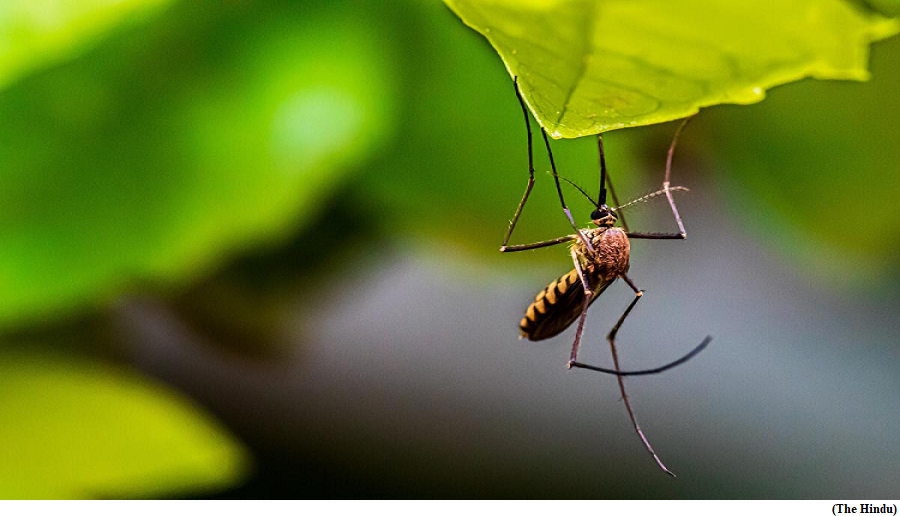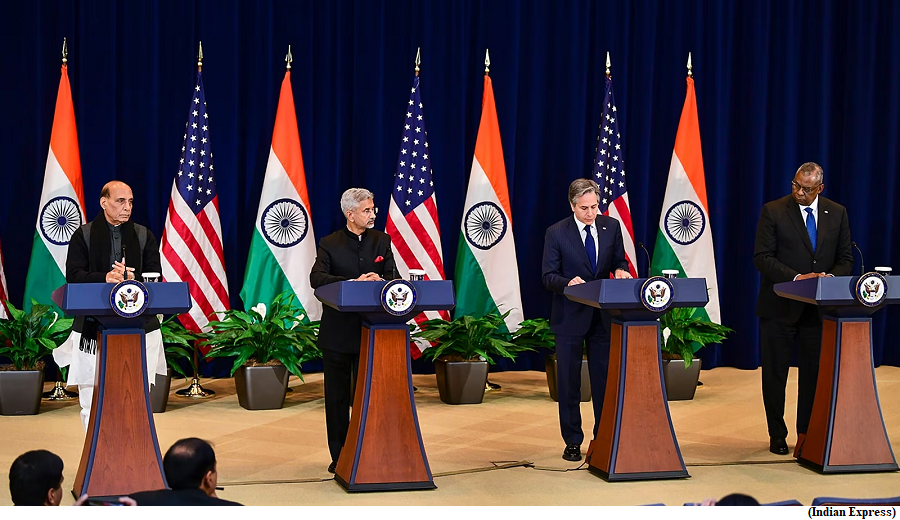Trouble with India guidelines on genetically modified insects (GS Paper 3, Science and Technology)

Context:
- India’s bioeconomy contributes 2.6% to the GDP. In April 2023, the Department of Biotechnology (DBT) released its ‘Bioeconomy Report 2022’ report, envisioning this contribution to be closer to 5% by 2030.
Details:
- This ambitious leap will require aggressive investment and policy support. But neither funding for the DBT, India’s primary promoter of biotechnology, nor its recent policies reflect any serious intention to uplift this sector.
- Along with more money, policies that enable risk-taking appetite within Indian scientists will be required to create an ecosystem of innovation and industrial action.
Funding issue:
- Funding for biotechnology India has been stagnating for a while. Despite a slight uptick during COVID-19, when DBT led the vaccine and diagnostics efforts, funding hasn’t returned to the pre-pandemic level. The current allocation is also only 0.0001% of India’s GDP, and it needs to be significantly revised if biotechnology is to be of any serious consequence for the economy.
- The reduced funding is detrimental to India’s national interests as well, considering the DBT is essential to any pandemic preparedness efforts.
- Further efforts are also needed to attract private funding in biotechnology research and development, a key area that industry representatives, investors, and government officials have highlighted multiple times.
Guidelines for GE insects:
- Funding aside, biotechnology policies also need to be aligned to the economic goals set out in the Bioeconomy report. However, the language in a set of guidelines that the Indian government released recently, pertaining to genetically edited insects, indicate a problem.
- In April 2023, the Department of Biotechnology (DBT) issued the ‘Guidelines for Genetically Engineered (GE) Insects’. They provide procedural roadmaps for those interested in creating GE insects.
Challenges:
Uncertainty of purpose
- The guidelines note that GE insects are becoming globally available and are intended to help Indian researchers navigate regulatory requirements.
- However, the guidelines don’t specify the purposes for which GE insects may be approved in India or how the DBT, as a promoter of biotechnology, envisions their use.
- The guidelines only provide regulatory procedures for R&D on insects with some beneficial applications.
- The guidelines set out forms and instructions for using GE insects of various types. The approval for these experiments comes under the broad ambit of the Review Committee on Genetic Manipulation, a body under the DBT.
- The guidelines have been harmonised to guidance from the World Health Organisation on GE mosquitoes. GE mosquitoes represent the most advanced application for this technology, yet the guidelines seem to downplay the economic opportunities that such insects provide.
- But the guidelines and policy are both quiet on how GE insects can benefit the bioeconomy and for which purposes the government might approve the insects’ release.
Uncertainty for researchers
- The guidelines are applicable only to research and not to confined trials or deployment. That is, once the insects are ‘made’ and tested in the laboratory, researchers can conduct trials with them on the approval of the Genetic Engineering Appraisal Committee (GEAC), of the Union Environment Ministry.
- Government authorities will also have to closely follow the deployment of these insects. Once deployed, GE insects can’t be recalled, and unlike genetically modified foods, they are not amenable to individual consumer choice.
- The nature of the technology products i.e. mosquitoes, honey bees, etc. also make their private use difficult. In any case, the government will be the primary buyer in many cases, such as ‘GE mosquitoes for disease alleviation’ or ‘honey bees for increased pollination’. But then there’s no clarity on whether the Environment Ministry will actually approve the deployment of GE insects or what criteria it might use to consider a proposal to do so.
- The guidelines define GE insects by their risk group and not by the end product. It makes sense to subject any GE insects for human/animal consumption to stringent checks, but why using insects for silk or lac production needs to be checked the same way is not clear.
- The guidelines can sidestep this by adapting its rules for genetically modified crops for non-consumption purposes.
Uncertainty of ambit
- The guidelines offer standard operating procedures for GE mosquitoes, crop pests, and beneficial insects – but what ‘beneficial’ means, in the context of GE insects, is not clear.
- The lack of clarity about the insects and the modifications to them that are deemed ‘beneficial’ will impede funders and scientists from investing in this research. In a country with low public as well as private funding, the absence of a precise stance to identify and promote research priorities hampers progress.
Conclusion:
- The guidelines are not in sync with the ambitions outlined in the Bioeconomy 2022 report.
First INDUS X Investors Meet ahead of 2 plus 2 Indo US Ministerial Dialogue
(GS Paper 2, International Relation)
Why in news?
- Innovations for Defence Excellence (iDEX) under the Department of Defence Production, Ministry of Defence and US Department of Defence, organised the maiden INDUS-X Investors Meet recently at New Delhi as a pre-cursor to the 2+2 Indo-US Ministerial Dialogue.
- The INDUS-X Educational Series (Gurukul) was also launched during the event.

Key Highlights:
- The first-ever INDUS-X Investors Event evinced the interest of the investors in the start-ups and MSMEs operating in the defence sector and the emerging opportunities under the INDUS-X initiative.
- The interactive meet brought all the stakeholders viz Startups/MSMEs, Investors, Incubators, Industry from both sides under one roof to discuss the collaborative agendas and opportunities thereon.
- The event also had focused panel discussions with a select audience of 50 thought leaders, including start-ups, investors, government officials and business leaders from the defence industry.
- The panel discussed on ‘Investment Opportunities in the Defence Sector’, elaborating upon establishing a sustainable commercial foundation for defence collaboration and co-production.
Gurukul initiative:
- The Gurukul initiative is aimed to help the innovators /startups to navigate in the defence eco-system of the US and India.
- The Gurukul (Education) series will have sessions for the startups/innovators by the experts from both sides including Govt Officials, Corporate Leaders, Industry Forums, Incubators/ Accelerators etc.
About INDUS-X:
- India - U.S. Defense Acceleration Ecosystem (INDUS-X) was launched in June 2023 during the State Visit of Prime Minister of India to the US to expand strategic technology partnership and defense industrial cooperation between governments, businesses, and academic institutions of India and US.
- INDUS X will be a defence innovation bridge which would inter-alia include Joint Challenges, Joint Innovation Fund, Academia engagement, Industry-startup connect, investment by private entities in defence projects , mentoring by experts, niche technology projects etc.



